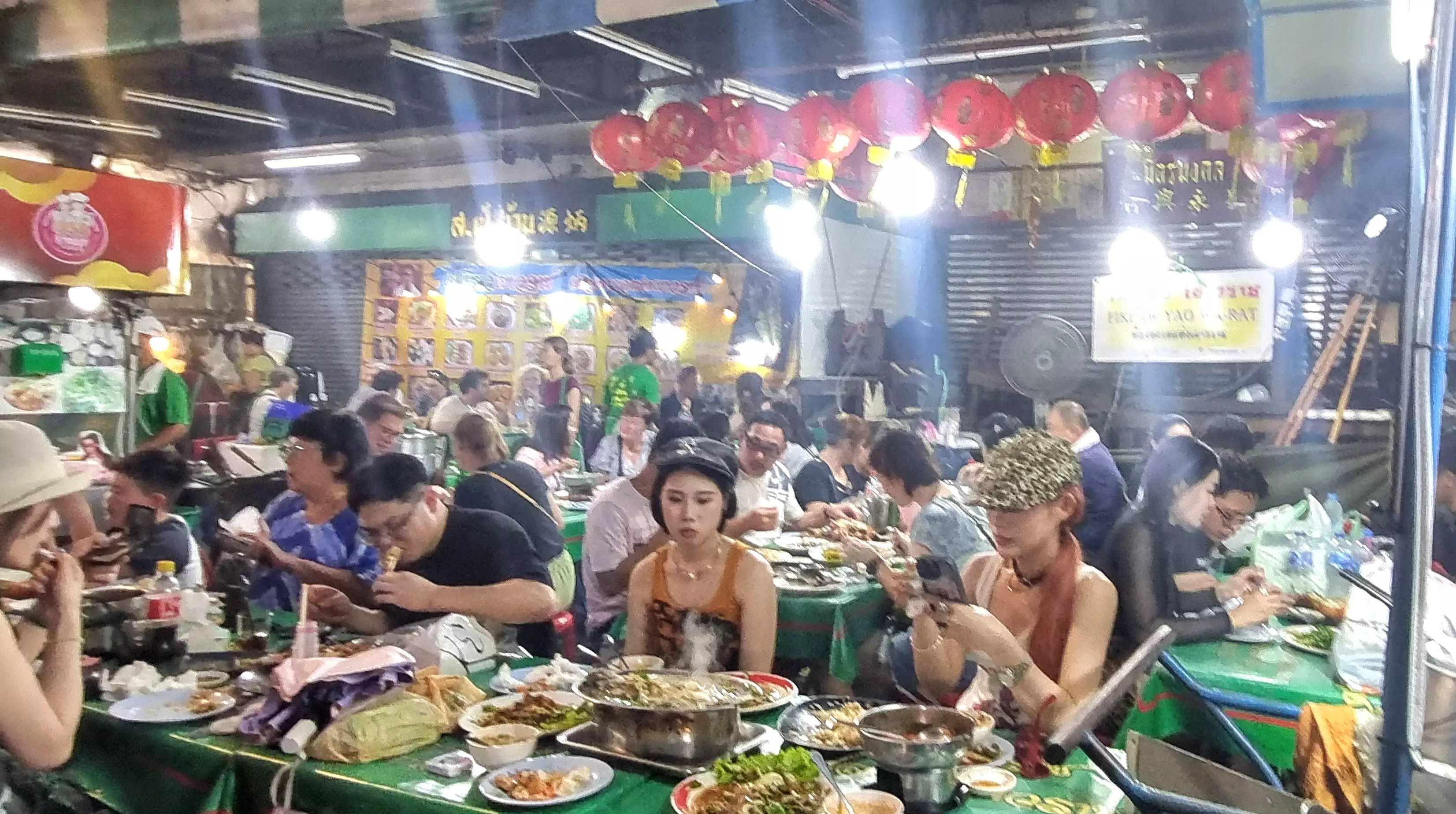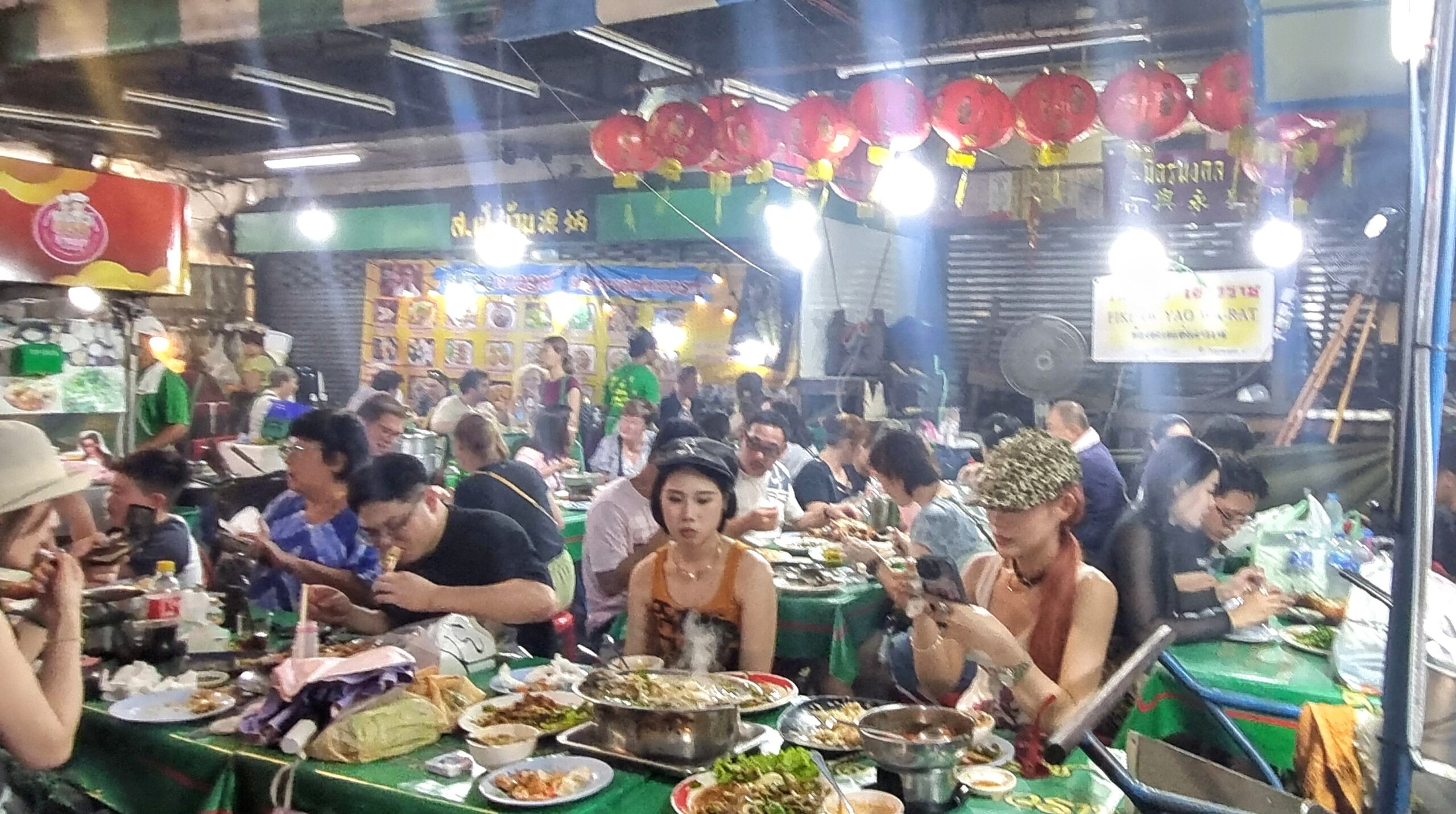
One of the most delectable, and difficult, articles to write about in this country is on the subject of street food.
Where do you start and where do you end? One of my most enjoyable evenings when we moved to Bangkok many years back was spent sitting on a plastic stool by a noisy road and relishing a plate of pla pao (fish marinated in rock salt and cooked over a charcoal) with a spicy chili sauce washed down with a glass of chilled Chang beer.
Since then, there have been many streetside savourings of the country’s best-known street food — fried rice (khao pat), soups (tom yan khun), noodles (phad thai), curries ( kaeng kiao wan) and much else.
Almost every area in Bangkok — Silom, Sukhumvit, Khao Sam Road, Victory Monument, Aree, Chula Varsity — has streets serving street food.
In fact, Thai street food has become so popular that almost all the big malls have street food sections — Central World, Central Embassy, Siam Paragon, Em Quartier — you name it.
The globally renowned street food vendor of Thailand is Supinya Junsuta, better-known as Jay Fai. She lifted Thailand’s street food legacy to the international level by winning a Michelin star twice.
As a result, it’s just about impossible to get a seat in her modest café, with queues lining up from sunrise to sunset, ever though her famed omelette is as expensive as 1000 baht (Rs 2,000).
There are various food tours in Bangkok, by bus and tuk tuk, as well as on foot.
We opted to go on foot and chose a company having specialist food tours in many parts of the world, including India, and a high online rating (https://achefstour.com/tour/bangkok-food-tour).
We chose a day or lunch tour of the charming, old part of the city which we had never visited before, and we chose a night tour of the city’s most colourful and vibrant foodie haunt —Yaowarat or China Town.
The two tours were totally different from each other, in terms of location, ambience, atmospherics, and of course, cuisine. But they were both gargantuan, gourmet food experiences.
What I liked most about the tours is that they were not just culinary experiences but offered social, cultural and historical perspectives on the food, restaurants, roads and area.
For our lunch tour we travelled on different forms of transport — boat, bus and tuk tuk — and got into a total Thai mode.
Some of the shophouse-eateries that we visited were more than 100 years old and run by multi-generation families.
Even the stall vendors who sold appetisers like the grilled sticky rice with taro and betel leaf wraps had high reputations and hence long queues of customers.
Queues were ubiquitous at every place and if our guide, Fun, did not instruct her runner, Champ, to run ahead and block a table for us, we would never have been able to eat as much as we did in the limited time of four hours.
The dishes on the morning food tour were light but scrumptious — Thai mussel pancake, fresh spring rolls, catfish salad, crispy mungbean crepe with salad, delectable papaya salad and, finally, a duck and pork noodle soup from a 105-year-old stall.
Our last stop was the famed Nangleong Market, one of the oldest and best-known street food markets in Bangkok, which had archival drawings on the walls — of its long history.
We wound our way amidst the crowded tables filled with hungry eaters and finally found a seat for ourselves.
The pork noodle soup here has a legendary reputation, and with its spicy dip, was an amazing meal by itself.
Last, came a bevy of coconut sweets — puddings, pancakes and confections.
Burping with delight, we made our way to the Chinese temple located within the market, ending our food tour on a spiritual note.
Our evening dinner tour started at the historical Shanghai Mansion which has featured in many Hollywood films.
Our lively guide Ann not only explained the culinary specialty of each dish but also the historical aspects of the eatery, road and area. We heard that Yaowarat was 150 years old, started by the old Chinese settlers in the city who began with gold shops and later introduced their varied cuisines.
The food variety in the Yaowarat area boasted of influences from all the neighboring Asian countries — Indonesia, Japan, Vietnam and India.
And so, we tasted succulent satay sticks (Indonesia), delicious sukiyaki noodles (Japan), amazing prawn dumplings (Chinese) and tangy yellow curries (India) accompanied by piquant sauces and salads. If the meats were soft and flavorful, it was because they were marinated all night in a bevy of spices and sauces.
The eateries were run by multi-generation families, and that’s how the food recipes were passed on, and the rich flavours retained.
Most of the eateries, including the Michelin-star winners, were small, innocuous shop houses in dinghy lanes, which an outsider would never find on one’s own. But judging by how jam- packed they were, it was obvious that the local gourmands knew which ones to select.
In fact, if our guide Amy didn’t have her runner, Arm, who went ahead and blocked a table for us, we would never have been able to revel in such a mega eating orgy.
At one point, we were served a special ice cream made of soya beans and thought it was dessert. But then we were told that the main course was still coming!
That’s when we milled into an over-crowded shop house eatery and indulged in an outstanding four-course meal — delectable salad, grilled prawns and seafood soup.
As exciting as the food items was the rumble on the streets which by nighttime were a cavalcade of colour, noise and vibrancy.
Yaowarat has not been called a street food paradise for nothing.
Although our food company said they could adjust to dietary requirements, these food tours are best enjoyed by non-vegetarian eaters.
When we were leaving, the guide and runner presented us with small gifts — a warm and very impressive gesture.
Both the morning and evening food tours have about 15 unique dishes and costs $ 59 dollars. It is value for money.
Children are given a half rate but they have to be under 13 years.
It’s sensible to go with a friend so that the great variety of food can be shared by two people.
“Eat, Eat, Repeat” is the motto of this specialised food tour company which conducts similar tours in many other Asian countries, including India.
They said they looked forward to welcoming more Indian foodies to their two culinary tours in Bangkok.
What are you waiting for, Indian foodies?
Check-https://achefstour.com/.
